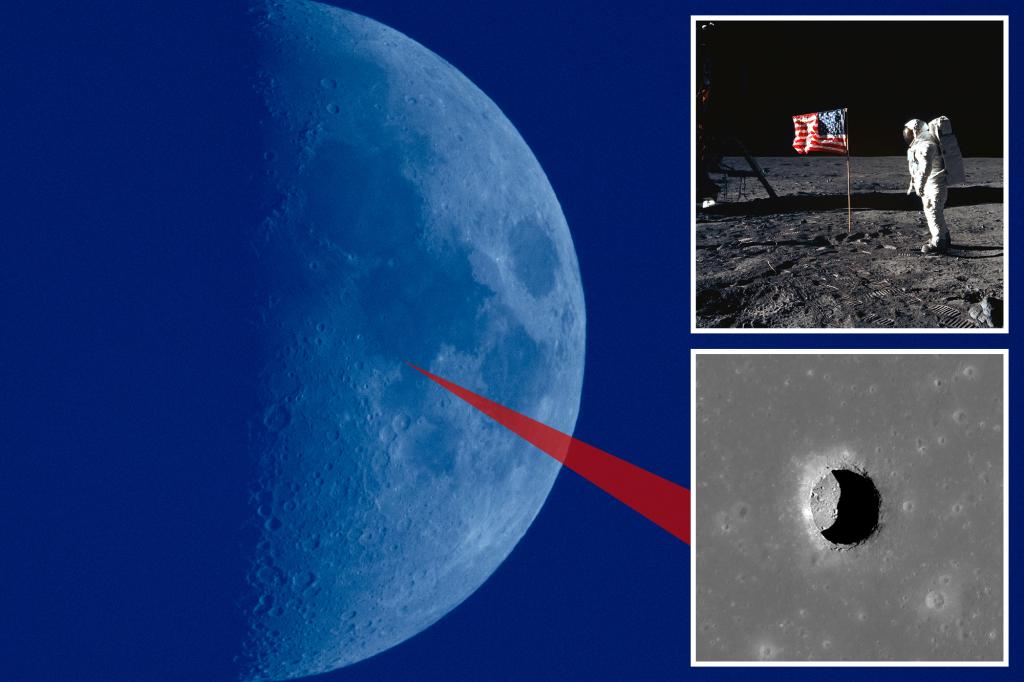Scientists have confirmed the existence of a cave on the moon near where Neil Armstrong and Buzz Aldrin landed 55 years ago and believe there may be hundreds more. The Italian-led team reported evidence of a sizable cave accessible from the deepest known pit on the moon, located at the Sea of Tranquility, close to the Apollo 11 landing site. These pits were all formed by the collapse of lava tubes.
The results were obtained by analyzing radar measurements from NASA’s Lunar Reconnaissance Orbiter, comparing them with lava tubes on Earth. The researchers estimate the cave is at least 130 feet wide and tens of yards long, based on the initial data. These findings were published in Nature Astronomy, marking the first confirmation of the existence of lunar caves in over 50 years of study.
Most of the pits appear to be located in the moon’s ancient lava plains, with potential sites in the south pole where NASA plans to land astronauts later in this decade. The shaded craters there are believed to contain frozen water, a vital resource for future missions. These caves could act as a natural shelter for astronauts, protecting them from radiation and micrometeorites.
The discovery indicates that there could be hundreds of pits and thousands of lava tubes on the moon. Such caves could be used as natural shelters for astronauts, making it easier to establish bases on the moon. Building habitats from scratch would be both challenging and time-consuming, with the potential need to reinforce cave walls to prevent collapse, as noted by the research team.
The rocks and material inside these caves provide valuable information about the moon’s evolution and its volcanic history. Studying these unaltered materials can help scientists better understand the moon’s geological processes and how it has changed over time due to volcanic activity. By utilizing these caves as natural shelters, future missions to the moon can be safer and more efficient for astronauts.
Overall, the confirmation of lunar caves near past landing sites marks an important discovery in lunar exploration. The potential for these natural formations to support future astronaut missions and provide insights into the moon’s history make them valuable targets for further study and potential utilization in upcoming lunar exploration missions.


